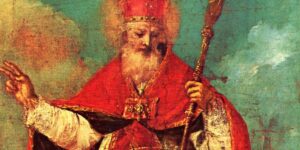By Rodaportal
INTRODUCTION
During the festive Christmas season, no character captivates the hearts of youngsters quite like Santa Claus. Parents impart the importance of kindness to secure a spot on his “good” list, and children eagerly anticipate his arrival, preparing Christmas cookies and singing songs in his honour. But who is Santa Claus, and how did he evolve into the beloved Christmas figure we know today?
Santa’s roots trace back to 280 A.D., originating with Saint Nicholas of Myra, an Orthodox Christian bishop born into a wealthy Greek Christian family in Patara, Lycia (modern-day Turkey). An inheritor of substantial wealth, Saint Nicholas was renowned for his compassion, assisting the underprivileged and discreetly gifting those in need. Over time, he became a defender of children and seafarers, evolving into one of Europe’s most revered saints by the Renaissance.

The Dutch, bringing the tale of Sinterklaas (Dutch for Saint Nicholas) to the New World colonies, played a pivotal role in shaping the modern Santa Claus. By the late 1700s, the benevolent Sinterklaas had become a part of American popular culture, eventually transforming into the familiar Santa Claus.
In the 1800s, a resurgence of interest in old legends brought Saint Nicholas back into the spotlight. Writers, poets, and painters contributed to the evolving narrative of Santa Claus, solidifying his place as a central figure in Christmas traditions.
Santa Claus, often depicted flying on his magical sleigh pulled by reindeer, enters homes through chimneys on Christmas Eve to deliver gifts. Living with Mrs. Claus at the North Pole, Santa receives letters from children worldwide and uses his “naughty” and “nice” lists to determine gift recipients. The tradition of leaving cookies and milk for Santa, along with carrots for the reindeer, adds to the enchantment of Christmas Eve.

The story of Rudolph, the famous red-nosed reindeer, emerged in 1939 when Robert L. May, a writer at Montgomery Ward, created a Christmas-themed story poem. Rudolph’s red nose, initially a source of teasing, proved invaluable when a foggy Christmas Eve threatened gift deliveries. Rudolph’s tale conveys the message that liabilities can be transformed into assets when given the chance.
As for Santa’s choice of the North Pole as his residence, it turns out to be a strategic decision to ensure the well-being of his reindeer. Reindeer are adapted to cold climates, tolerating temperatures as low as minus 88 Fahrenheit, making the North Pole an ideal location for Santa’s workshop.

Dispelling a common misconception, Coca-Cola did not invent Santa’s red suit; St. Nicholas wore his red bishop’s robes long before the soda’s existence. Interestingly, Rudolph and Santa’s other reindeer might all be female, as only female reindeer retain their antlers during winter.
To further intrigue your Christmas spirit, did you know that reindeer, descendants of the Ice Age, can endure temperatures as low as -70 degrees Celsius? Their dense fur provides optimal insulation, ensuring survival in the harshest conditions.
So, as you dive into the enchanting history of Santa Claus and his festive companions, remember that the magic of Christmas extends far beyond the presents under the tree. If you’re eager to explore more about Santa’s journey, you can watch our captivating video titled “Guess Who’s Coming To Town – Santa Claus.”

Discover the origins, tales, and heartwarming magic that makes Santa the symbol of joy and generosity during the holiday season. Click here to watch: Guess Who’s Coming To Town – Santa Claus.
As you enjoy the holiday festivities, feel free to share any additional fascinating facts or your thoughts in the comments below. Learning something new during the holiday season is truly a gift that keeps on giving!

#santaclaus #christmas #santa #christmastree #merrychristmas #christmastime #xmas
